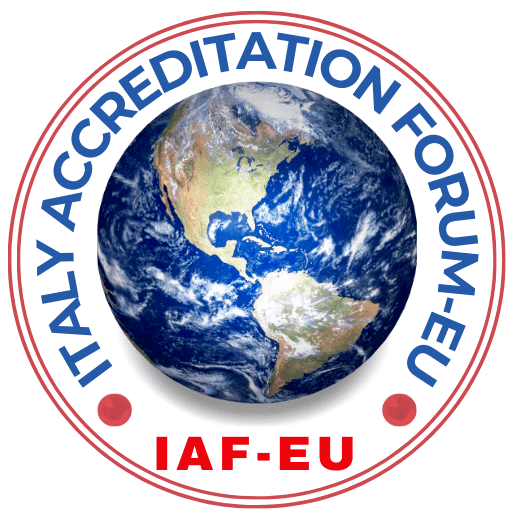WHAT IS AN ACCREDITATION
WHAT IS AN ACCREDITATION
Accreditation is a process of review that healthcare organizations participate in to demonstrate the ability to meet predetermined criteria and standards of accreditation established by a professional accrediting agency. Accreditation represents agencies as credible and reputable organizations dedicated to ongoing and continuous compliance with the highest standard of quality. IAF-EU collaborates with industry experts to create standards to ensure that quality is maintained throughout all aspects of the organization.
Accreditation is a term used to describe the process that institutions of higher education undergo to confirm they meet the strictest educational standards. Accreditation is earned through accrediting bodies, which are private, nongovernmental organizations that have been created specifically to review higher education institutions and programs. These accreditors are reviewed for quality by entities such as the Council for Higher Education Accreditation (CHEA) or the United States Department of Education (USDE), and they are held to extremely high quality standards of their own
Accreditation is an internationally recognized evaluation process used in many countries to assess the quality of care and services provided in a range of areas such as health care, long term residential aged care, disability services, and non-health related sectors such as child care. Accreditation has been rapidly adopted by health and aged care services worldwide as part of a safety and quality framework.
STANDARDS
STANDARDS
ISO 9001:2015 CERTIFICATION
ISO 9001:2015 CERTIFICATION
ISO 9001 is the international standard that specifies necessities for a quality management system (QMS). Organizations use the standard to demonstrate the ability to consistently offer products and services that meet client and regulatory necessities. It is the most popular standard in the ISO 9000 series and the only standard in the series to which organizations can certify.
Every five to 10 years, the International Organization for Standardization reviews the standards in order to keep them up to date. The 2008 revision of the standard is still valid until September 2018. Before that date, all previously certified companies will have to make the transition to the new 2015 revision in order to maintain their registrations.
A company requires its clients to be completely fulfilled with its products and services. Without that, it can face major issues in the functioning. To do this, it requires taking steps in order to satisfy and please their clients by meeting their requirements. The ISO 9001:2015 promises to perform to the needs of the company as well as the clients. It presents a reliable framework to organize and systematize work of the company and hence, helping it to perform in a better way.
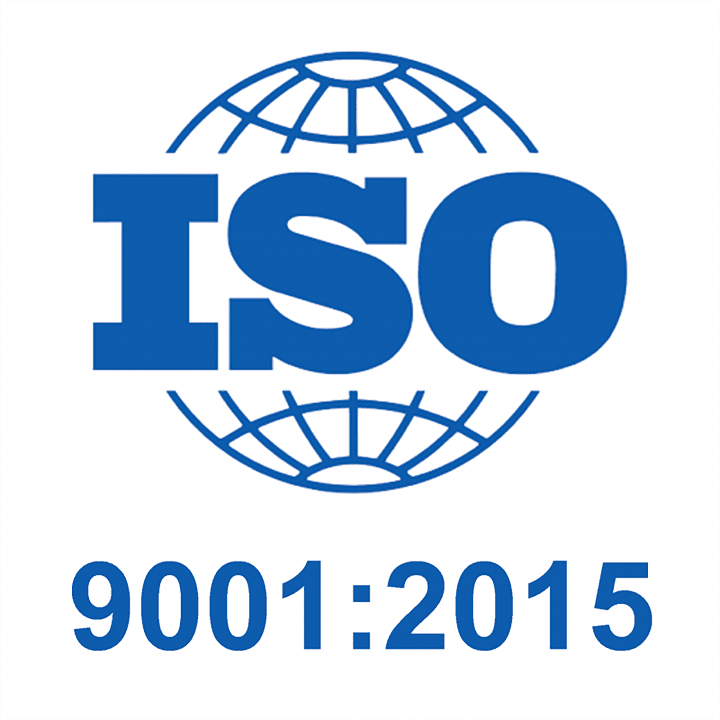
BENEFITS OF ISO 9001:2015
BENEFITS OF ISO 9001:2015
- Shows that you offer products and services that meet the customer’s needs, comply with the law and legislation, and meet the organization’s own needs.
- Shows that you provide products and services of consistent quality.
- ISO 9001 is positive for your image: you show that you comply with internationally recognized quality standards. This is often a requirement for clients and suppliers to do business with you.
- ISO 9001 helps you enhance customer satisfaction.
- Can support you streamline your business procedures and continuously progress them.
These factors will affect the number and type of assessments to be undertaken during the initial assessment and for ongoing surveillance.
Once accredited, the annual fees and certificate fees will be charged. These are published through our accreditation manual, available to all applicant and accredited bodies.
SECTION CHANGES IN ISO 9001:2015
SECTION CHANGES IN ISO 9001:2015
| Section Number | Current Standard Sections | Proposed Standard Sections |
| Section 1: | Scope | Scope |
| Section 2: | Normative Reference | Normative References |
| Section 3: | Terms and Definitions | Terms and Definitions |
| Section 4: | General Requirements | Context of the Organization |
| Section 5: | Management Responsibility | Leadership |
| Section 6: | Resource Management | Planning |
| Section 7: | Product Realization | Support |
| Section 8: | Measurement, Analysis and Improvement | Operation |
| Section 9: | Performance Evaluation | |
| Section 10: | Improvement |
ISO 13485:2013 CERTIFICATION
ISO 13485:2013 CERTIFICATION
ISO 13485:2013 is a internationally acknowledged standard developed by the International Organization for Standardization (ISO) that specifies the needs for quality management systems (QMS) in the medical device industry. In order to be certified to the ISO 13485:2013 standard, companies must demonstrate the implementation, maintenance, and efficiency of a medical device quality management system that recognize, manages, and minimizes risks associated with the manufacturing of medical devices and related services.
ISO 13485:2013 specifies needs for a quality management system where an organization requirements to demonstrate its ability to give medical devices and related services that consistently meet client needs, regulatory requirements applicable to medical devices and related services.
ISO 13485 excludes few needs of ISO 9001 and includes some particular requirements for medical devices. An organization after achieving ISO 134845:2013 Certification of International Standard cannot claim conformity to ISO 9001 because of exclusions of few needs. Regardless of the type or size of the organization, all requirements of ISO 134845:2013 are particularly made for medical based organizations.

BENEFITS OF ISO 13485:2013
BENEFITS OF ISO 13485:2013
- Proven business credentials – through independent confirmation against acknowledged standards.
- Customer satisfaction – through delivery of products that constantly meet client requirements as well as quality, safety and legal requirements.
- Improved stakeholder relationships – including staff, clients and suppliers.
- Improved risk management – through greater constancy and traceability of products and use of risk management techniques.
- Reduced operating costs – through constant development of processes and resulting operational efficiencies.
- Ability to win more business – particularly where procurement specifications need certification as a condition to supply in a highly regulated sector.
- Legal compliance – by understanding how statutory and regulatory needs impact the organization and its clients.
ISO 14001:2015 CERTIFICATION
ISO 14001:2015 CERTIFICATION
ISO 14001 is the most acknowledged international standard for environmental management systems. It is used international. The nature of ISO 14001 agrees to it to be applied to the whole range of business sectors, scopes, and activities. It is a truly universal standard, which is one of its great benefits. It gives a framework through which an organization can deliver environmental performance improvement in line with its environmental policy commitments.
ISO 14001:2015 specifies the requirements for an environmental management system that an organization can use to improve its environmental performance. ISO 14001:2015 is intended for use by an organization looking for to manage its environmental responsibilities in a systematic manner that contributes to the environmental pillar of sustainability.

WHAT DOES THE 2015 REVISION BRING TO THE EMS?
WHAT DOES THE 2015 REVISION BRING TO THE EMS?
- Greater involvement of the top management in the EMS
- Improvement of the procedure approach and PDCA cycle
- Better integration with other business activities
- Higher emphasis on environmental performance monitoring
- Decentralization of the system and spread of responsibilities for the EMS throughout the organization
- Consideration of the whole lifecycle of the product or service during aspects evaluation
BENEFITS OF ISO 14001:2015
BENEFITS OF ISO 14001:2015
- Grow up your access to business partners and potential clients
- Develop the corporate image and credibility
- Protect the company, assets, shareholders and directors
- Quantify, monitor and control the impact of operations on the environment, now and in the future
- Improve environmental performance of supply chain
- Recognize cost savings with greater emphasis on resource, waste and energy management
- Make sure legislative awareness and compliance
- Potentially decrease public liability insurance costs for your organization
ISO 15000-1:2004 CERTIFICATION
ISO 15000-1:2004 CERTIFICATION
ISO 15000-1:2004 specifies the requirements for a collaboration-protocol profile (CPP), and a collaboration-protocol agreement (CPA). The CPP describes a trading partner's technical capabilities for performing electronic business. The CPA describes the agreement between two trading partners on the technical capabilities they will use for specific electronic-business collaboration. Included in the CPP and CPA are details of transport, messaging (using ISO 15000-2:2004), security constraints, and binding to a business-process-specification document that contains the definition of the interactions between the two parties while engaging in a specified electronic business collaboration.
We are reputed recognized Certification possessing highly experience resources dedicated to provided to quality services to our clients, in Various region of India and globally to maintain the service and quality of a product in India . For some industries, certification is a legal or contractual requirement. ISO 15000-5:2014 can be employed wherever business information is being shared or exchanged amongst and between enterprises, governmental agencies, and other organizations in an open and worldwide environment.
The ISO 15000-1:2004 certification process in involves the addressing of the constraints that specified in the CPP and CPA that are important for betterment of business such as transportation, messaging and security. Additionally, there is also a document contained in the standard that is essential for better business process specifications.

BENEFITS OF ISO 15000-1:2004
BENEFITS OF ISO 15000-1:2004
- Reduced greenhouse-gas (GHG) emissions and carbon footprint. Compliance with this standard will allow you to meet current or future voluntary and/or mandatory energy efficiency targets or GHG emission reduction legislation.
- Increase energy cost savings for the organization by reducing energy costs via a structured approach to managing your energy consumption.
- Increased knowledge of equipment efficiencies. By integrating your existing management systems you can align your Energy Management System (EnMS) with existing management systems for additional organizational benefits.
- Informed decision-making processes from system design through to operation
- Increased energy awareness among staff members at all levels.
- Structured approach to the Right First Time methodologies
- Improved corporate image and credibility with all stakeholders and customer
- Enhanced security of energy supply as you will have identified your energy risk exposure in areas within the organization and commenced processes to reduce them
- Improved operational efficiencies and maintenance practices
ISO-TS 16949:2009 CERTIFICATION
ISO-TS 16949:2009 CERTIFICATION
TS 16949 are an internationally recognized Quality Management System specification for the automotive industry. TS 16949:2009 is the current version (last updated in the year 2009) of the standard that was developed for the Automotive Industry. It contains all of the requirements of ISO 9001 plus several additional requirements specifically for the Automotive Industry.
The IATF has developed a common registration scheme for supplier 3rd party registration to the ISO/TS 16949 standard. The registration scheme includes third party auditor qualifications and common rules for consistent global registration.
ISO/TS 16949 was jointly developed by The International Automotive Task Force (IATF) members and submitted to the International Organization for Standardization (ISO) for approval and publication.
The essential objective of this course is to refresh and/or review the structure & basic requirements of ISO/TS 16949:2009 & enable the company employees to plan & conduct the internal audit to improve the effectiveness of QMS & add value to the organization. It also helps people to get an opportunity to enhance their auditing skills & demonstrate compliance to the standard’s requirement.

BENEFITS OF ISO-TS 16949:2009
BENEFITS OF ISO-TS 16949:2009
- Improved product and process quality and reliability.
- Improved on-time delivery.
- Greater emphasis on supplier quality improvement efforts.
- ISO/TS 16949 satisfies automotive mandates of IATF members on a global basis, when complemented by fulfillment of customer-specific requirements
- Eliminates the need for multiple third-party registrations on a geographic basis
- Enables firms to upgrade from QS-9000, VDA 6.1, etc. during regularly scheduled surveillance audits, provided the registrar is IATF-approved for ISO/TS 16949.
- Promises more consistent auditing performance. Auditors of recognized ISO/TS 16949 registrars must undergo extensive training, testing and re-qualification to meet rigorous qualification requirements.
OHSAS 18001:2007 CERTIFICATION
OHSAS 18001:2007 CERTIFICATION
OHSAS 18001 is an international standard giving requirements related to Health and Safety Management Systems.
OHSAS 18001 enables an organization to have control over, and knowledge of, all relevant hazards resulting from normal operations and abnormal situations, and improve its performance.
OHSAS 18001 Certification is an Occupational Health and Safety Management System (where the OHSAS stands for Occupational Health and Assessment series). The purpose of this OHSAS 18001 standard is to control the Occupational Health and Safety (OHS) risk and improve the Occupational Health and Safety (OHS) performance in the organization. OHSAS 18001 standards is applicable to any organization that wishes to implement OHSAS 18001 management system and to eliminate or minimize risks to personnel and other interested parties who could be exposed to OHSAS hazards associated with organization’s activities and complying with applicable legal and regulatory requirements related to occupational health and safety.
This system is proven to enable a business to be pro-active rather then re-active when approaching health and safety, therefore more effectively protecting the health and welfare of your workforce on an on-going basis. A OHSAS 18001 health and safety management provides a process driven approach to controlling and monitoring risks that can arise from the company’s day to day activities.
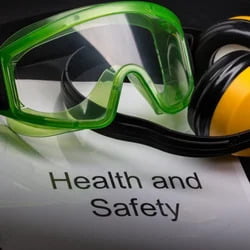
BENEFITS OF OHSAS 18001:2007
BENEFITS OF OHSAS 18001:2007
- Minimize the Health and safety Risk in the organization.
- Reduce the accident and incident in the organization.
- Improve Compliance level with Legal and regulatory requirements related to OHSAS.
- Improve the Confidence of person working under control of organization towards their health and safety.
- Reduce the cost toward employee health and safety.
- Improve the business potential among the competitor.
- Improve the confidence of customer and interested party.
- Improved operation control towards employee health and safety.
- Overall improvement of organization reputation towards OHSAS.
- Business opportunity improved.
ISO/IEC 20000-1:2011 CERTIFICATION
ISO/IEC 20000-1:2011 CERTIFICATION
ISO/IEC 20000-1:2011 is a service management system (SMS) standard. It specifies requirements for the service provider to plan, establish, implement, operate, monitor, review, maintain and improve an SMS. The requirements include the design, transition, delivery and improvement of services to fulfill agreed service requirements.
ISO IEC 20000-1 is designed to be used for certification purposes. If you’re a service provider and you decide to pursue this option, you need to establish a service management system (SMS) that complies with the ISO IEC 20000-1 2011 standard. Once you’ve done so, it’s time to ask a registrar (certification body) to audit the system to see if it, in fact, complies. If it does, your registrar or certification body will issue an official certificate that states that your SMS complies with the standard.
ISO/IEC 20000 is an attractive option for organizations looking to achieve continued improvement in the quality of its IT services – inspiring or reinforcing the confidence of its customers in the organization’s ability to deliver high quality service.
The adoption of ISO 20000 has grown rapidly in the international arena for both internal and external IT service providers and it has become a competitive differentiator for delivery of IT services.

BENEFITS OF ISO/IEC 20000-1:2011
- ISO/IEC 20000-1 certification provides objective evidence of compliance to ITIL best practices
- Competitive advantage
- Easy roadmap to IT Service Management implementation
- Certification drives continual service improvement
- Provides a scalable standard which can be applied to any size IT operation
- Third party endorsement of compliance to ITSM best practices.
- For internal IT, ISO 20000-1:2011 certification increases perceived value of IT services
ISO 22000:2005 CERTIFICATION
ISO 22000:2005 CERTIFICATION
ISO 22000:2005 Food Safety Management System is an International Management System certification criteria/requirements, an organization can opt to go for certification against ISO 22000:2005 Food Safety Management System -Requirements.
Established in 2005, ISO 22000 was designed as an accessible, globally accepted standard, and is applicable to organizations of all sizes, involved in any aspect of the food supply chain. The standard covers the key components for ensuring food safety including interactive communication, system management, implementation of pre-requisite programmers and the continual review and improvement of the system.
Food Safety management training courses gives your organization an international acceptance and competitive edge, ISO 22000 provides well-defined and clear framework that is flexible to your business needs and expectations.
The objective of this training course is to instruct food safety auditors in the principles and practices specific to auditing for conformance with ISO 22000:2005, including planning and preparation of the audit, audit practices, and reporting audit findings. Based on practical exercises, the participant will develop the skills (mastering audit techniques) and competencies (managing audit teams and audit program, communicating with customers, conflict resolution, etc.) necessary to efficiently conduct an audit.
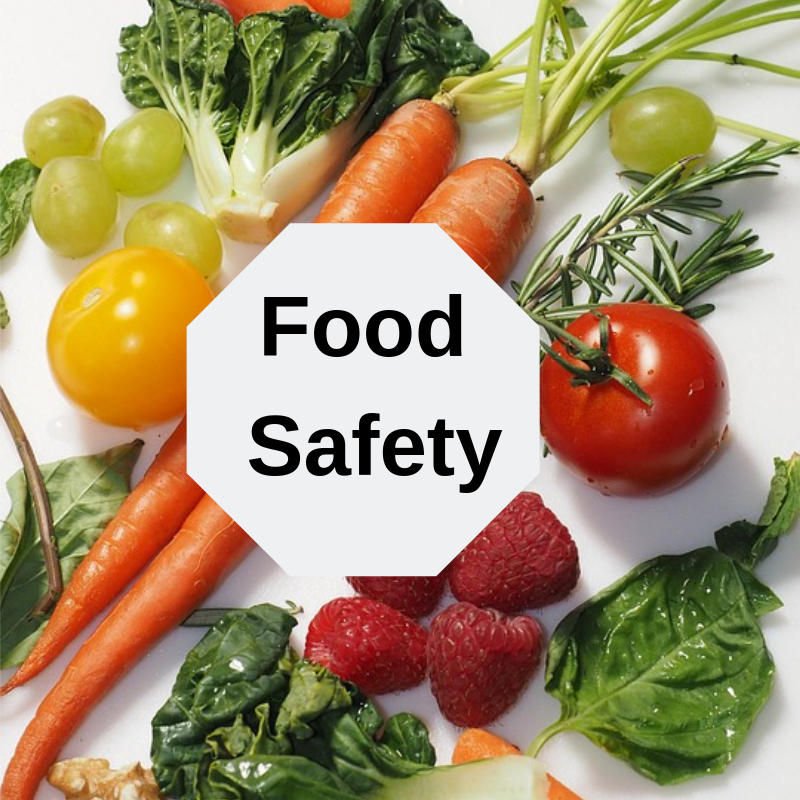
BENEFITS OF ISO 22000:2005
BENEFITS OF ISO 22000:2005
- Flexibility, allowing it to be applies to all the industries in the food chain, it encourages the cooperation in increasing food safety hazards.
- Demonstrates an organization’s commitment to food safety.
- Internationally-recognized, Harmonized standard for controlling food safety hazards.
- Provides a framework for the management commitment, communication with suppliers and customers, and continuous improvement of the food safety system.
- It can be integrated with various management systems like ISO 9001, ISO 14001 etc.
ISO 27001:2013 CERTIFICATION
ISO 27001:2013 CERTIFICATION
ISO/IEC 27001:2013 specifies the requirements for establishing, implementing, maintaining and continually improving an information security management system within the context of the organization. It also includes requirements for the assessment and treatment of information security risks tailored to the needs of the organization. The requirements set out in ISO/IEC 27001:2013 are generic and are intended to be applicable to all organizations, regardless of type, size or nature.
This standard will help your company coordinate all your security efforts both electronically and physically, coherently, cost effectively and with consistency and prove to potential customers that you take the security of their personal / business information seriously.
The system promotes efficient management of sensitive corporate information, highlighting vulnerabilities to ensure it is adequately protected against potential threats. It encompasses people, process and IT systems.
ISO 27001 is the international standard which is recognized globally for managing risks to the security of information you hold. Certification to ISO 27001 allows you to prove to your clients and other stakeholders that you are managing the security of information in your possession. ISO 27001:2013 (the current version of ISO 27001) provides a set of standardized requirements for an information security management system (ISMS). The standard adopts a process approach for establishing, implementing, operating, monitoring, reviewing, maintaining, and improving your ISMS.
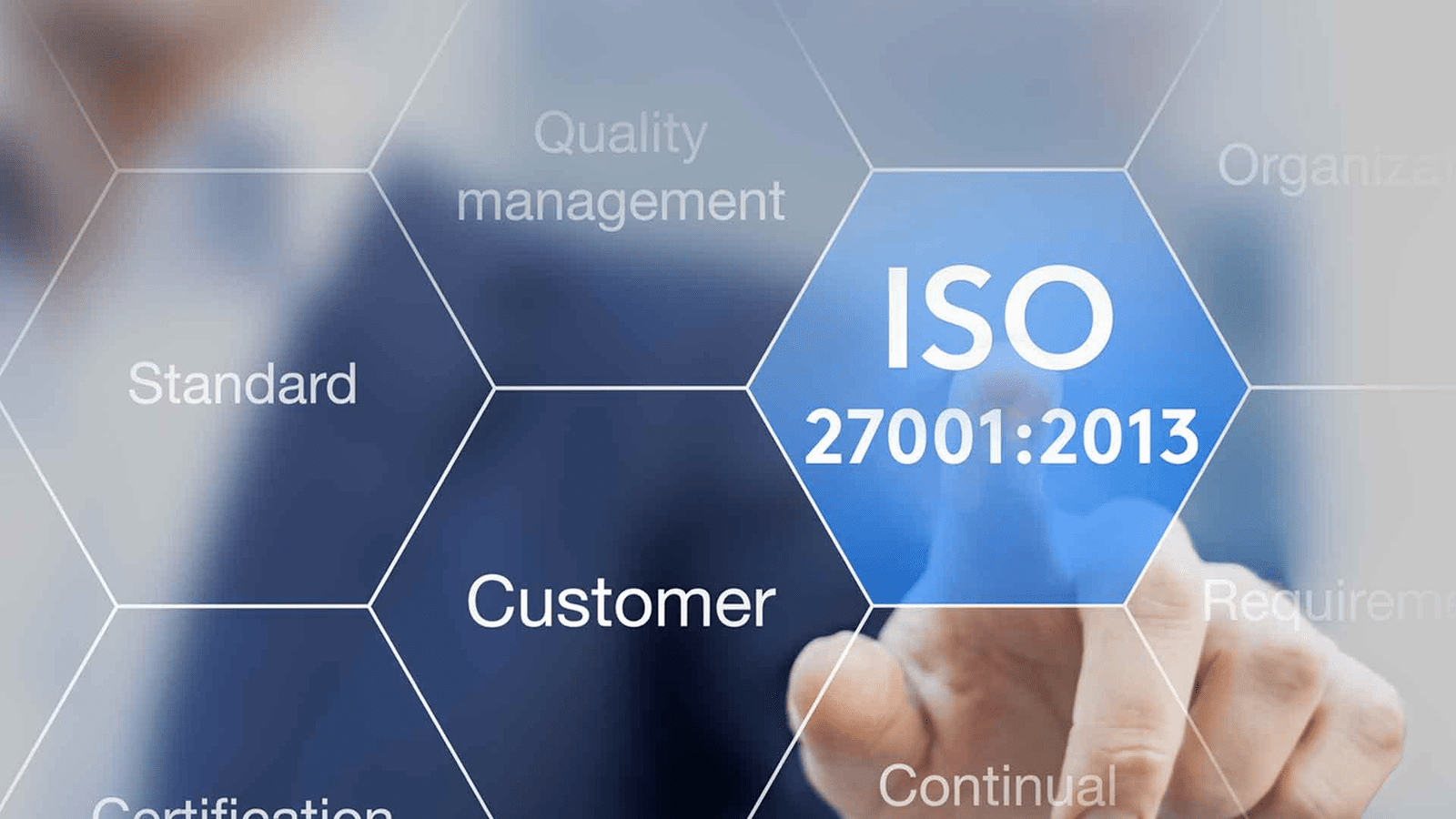
BENEFITS OF ISO 27001:2013
BENEFITS OF ISO 27001:2013
- Allows for secure exchange of information
- Provides customers and stakeholders with confidence in how you manage risk
- Manages and minimizes risk exposure
- Keeps confidential information secure
- Helps you to comply with other regulations (e.g. SOX)
- Provide you with a competitive advantage
- Builds a culture of security
- Allows you to ensure you are meeting your legal obligations
- Enhanced customer satisfaction that improves client retention
- Protects the company, assets, shareholders and directors
- Consistency in the delivery of your service or product
CE MARK CERTIFICATION
CE MARK CERTIFICATION
CE Marking is also known as CE mark. CE marking certification is a mandatory to export products to Europe. With the CE marking on a product the manufacturer ensures that the product is in conformity with the essential requirements of the applicable EC directives. The letters "CE" stand for "Conformité Européenne" ("European Conformity").
CE marking is the responsibility of the person who places the product on the market, or puts it into service, for the first time. In law this duty rests with the Responsible Person, which in most cases is either the manufacturer or the manufacturer's authorized (in writing) representative, but can also include those who import non CE marked products into Europe, any user in Europe who makes a product for their own use, and those who modify existing products already in use to such an extent they must be considered "new" products.
CE is a mandatory mark for certain product groups in order for them to be sold on the European market – specifically into the EU. The requirements are set out in European Directives (similar to Australia’s Regulations and Acts) that cover health, safety and environmental protection legislation.
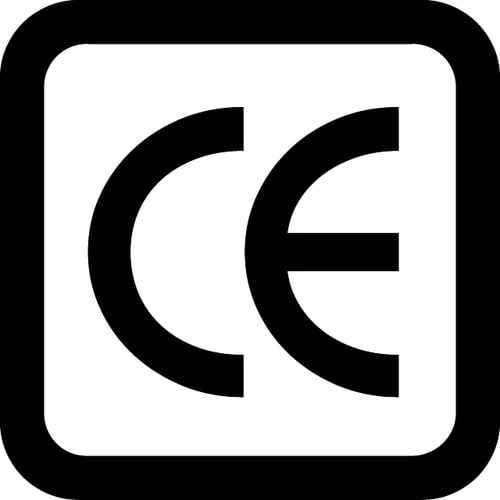
WHAT IS THE CE MARKING PROCESS?
WHAT IS THE CE MARKING PROCESS?
- Identify the Directive(s) that are applicable to your product
- Identify the conformity assessment procedure for your product and Directive
- Determine the dates by which you must take action
- Identify if there are any Harmonized European Standards applicable to your product
- Ensure the product complies with all the essential requirements of the Directive(s)
- Identify whether independent assessment of your conformity is required by a Notified Body
- Maintain Technical Documentation required by the Directive(s)
- Prepare the Declaration of Conformity and the required supporting evidence
- Check that no other purely national requirements exist in the country where the product is to be sold
- Contact us to arrange for testing of your product
- If all requirements are met, you can then affix the CE mark on your product and/or packaging
GMP CERTIFICATION
GMP CERTIFICATION
The Good Manufacturing Practice (GMP) certificate is relating to the manufacture of a medicinal product, an active pharmaceutical ingredient or a cosmetic product attesting to its conformity with the relevant GMP Standard as appropriate.
GMP Certification confirms the products identity, composition, quality, purity and strength which they represent in the market. Under it, there is a set of guidelines that offer a system of procedures and documentation by which the confirmation of the products are given.
GMP covers all aspects of production from the starting materials, premises and equipment to the training and personal hygiene of staff. Detailed, written procedures are essential for each process that could affect the quality of the finished product. There must be systems to provide documented proof that correct procedures are consistently followed at each step in the manufacturing process - every time a product is made.
Good quality must be built in during the manufacturing process; it cannot be tested into the product afterwards. GMP prevents errors that cannot be eliminated through quality control of the finished product. Without GMP it is impossible to be sure that every unit of a medicine is of the same quality as the units of medicine tested in the laboratory

BENEFITS OF GMP CERTIFICATE
BENEFITS OF GMP CERTIFICATE
- Enhances the food safety management system
- Increases consumer confidence in your products
- Helps to decrease operating costs due to rework and penalties due to non-compliance
- Helps boost export opportunities.
- Reduced duplication of inspections
- Cost saving
HACCP CERTIFICATION
HACCP CERTIFICATION
The Good Manufacturing Practice (GMP) certificate is relating to the manufacture of a medicinal product, an active pharmaceutical ingredient or a cosmetic product attesting to its conformity with the relevant GMP Standard as appropriate.
GMP Certification confirms the products identity, composition, quality, purity and strength which they represent in the market. Under it, there is a set of guidelines that offer a system of procedures and documentation by which the confirmation of the products are given.
GMP covers all aspects of production from the starting materials, premises and equipment to the training and personal hygiene of staff. Detailed, written procedures are essential for each process that could affect the quality of the finished product. There must be systems to provide documented proof that correct procedures are consistently followed at each step in the manufacturing process - every time a product is made.
Good quality must be built in during the manufacturing process; it cannot be tested into the product afterwards. GMP prevents errors that cannot be eliminated through quality control of the finished product. Without GMP it is impossible to be sure that every unit of a medicine is of the same quality as the units of medicine tested in the laboratory
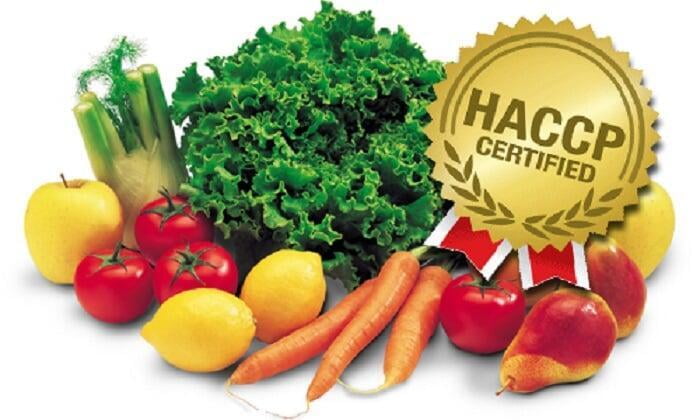
HACCP PRINCIPALS:
HACCP PRINCIPALS:
- The implementation of hazard analysis
- Determine Critical Control Points (CCP). For each risk identified.
- Establishing critical limits, maximal and / or minimum value, by which biological, chemical and physical hazards in order to control the pedagogical prevention.
- Determination of procedures / processes for monitoring CCPs
- Determination of corrective measures in case the monitoring shows that the CCP is not within the critical limits.
- Establish procedures / processes for verification and certification procedures and the HACCP system is effective and it works well. The verification activities should be included authorized persons employed in production, the HACCP team.
- The establishment and effective management of records and documents
ROHS CERTIFICATION
ROHS CERTIFICATION
RoHS is the acronym for Restriction of Hazardous Substances. RoHS, also known as Directive 2002/95/EC, originated in the European Union and restricts the use of specific hazardous materials found in electrical and electronic products. All applicable products in the EU market after July 1, 2006 must pass RoHS compliance.
RoHS is a directive, not a regulation. A regulation is a law that is immediate and universal across all participating entities in the EU. A directive is a legislative act which requires member states to achieve a particular result without dictating the means of achieving that result. This means it's a law but there can be differences in how the law is carried out. Directives typically leave member states with a certain amount of leeway as to the exact rules to be adopted. Both immediately apply to anyone who wants to sell in the EU, import from the EU, or manufacture in the EU.
The RoHS Directive prevents all new electrical and electronic equipment placed on the market in the European Economic Area from containing lead, mercury, cadmium, hexavalent chromium, poly-brominates biphenyls (PBB) or polybrominated diphenyl ethers (PBDE), except in certain specific applications, in concentrations greater than the values decided by the European Commission. These values have been established as 0.01% by weight per homogeneous material for cadmium and 0.1% for the other five substances.
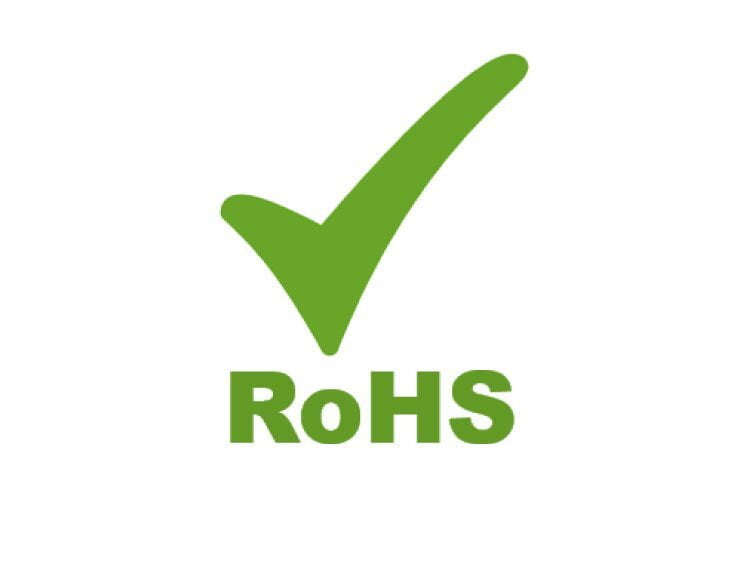
RoHS specifies maximum levels for the following restricted materials:
RoHS specifies maximum levels for the following restricted materials:
- Lead (Pb): < 1000 ppm
- Mercury (Hg): < 100 ppm
- Cadmium (Cd): < 100 ppm
- Hexavalent Chromium: (Cr VI) < 1000 ppm
- Polybrominated Biphenyls (PBB): < 1000 ppm
- Polybrominated Diphenyl Ethers (PBDE): < 1000 ppm
- Bis(2-Ethylhexyl) phthalate (DEHP): < 1000 ppm
- Benzyl butyl phthalate (BBP): < 1000 ppm
- Dibutyl phthalate (DBP): < 1000 ppm
- Diisobutyl phthalate (DIBP): < 1000 ppm
HALAL CERTIFICATION
HALAL CERTIFICATION
Halal Certification is recognition that the products are permissible under Islamic law. These products are thus edible, drinkable or usable by Muslims. Halal Certification from Halal Trust an oldest established Islamic organization helps to build Halal consumer's confidence without suspicion or doubt over the consumption of the food products in restaurants, Hotels or in the form of medicines and vitamins. It is an authoritative and reliable testimony to support food manufacturers' claim that their products have met strict Halal requirement by the Shariah Law.
Halal and haram are universal terms that apply to all facets of life. However, we use these terms only in relation to food products, meat products, cosmetics, personal care products, food ingredients, and food contact materials. There are some things which are not clear are considered questionable or suspect and more information is needed to categorize them as Halal or Haram. If a muslim consumes Haram foods and materials, he would be sinful.
Halal food certifiers and others in the Australian Muslim community have rejected these claims, and those who make them are yet to produce any evidence. But a lack of transparency from certifiers, along with a fragmented marketplace and confusion over what the halal certification process involves, creates a climate of uncertainty for anti-halal campaigners and Muslim consumers alike.

- As a confirmation for Muslim customers that the food served is Halal and is in accordance with Islamic Law.
- Assure customers that the food served is Halal and healthy and the premise's hygiene and sanitation procedures are in top-notch.
- Widen the range of customers by attracting Muslim customers and non-Muslim who are Halal consumers.
- Increase a restaurant's revenue and enhance its marketability especially to Halal consumers.
- If planning to export, the Halal certificate will help to assure Halal consumers in importing countries.
